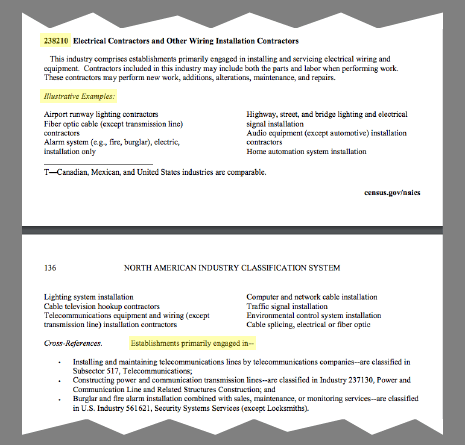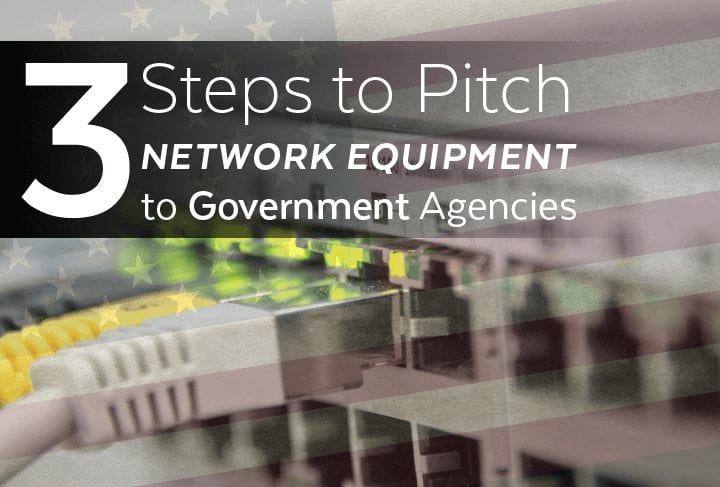Last week the Washington Post announced a White House pledge to spend a massive $1 trillion on a road, waterway, and airport infrastructure overhaul initiative.
For most people and industries, infrastructure repair is nothing but a headache. But for some specific verticals, it means big business. So for those of us that bid on government contracts, we’re going to be busy in the coming years.
If you haven’t yet thought about how you might go about capturing some of this cash, this is the time to start.
Expanding your clientele to the public sector isn’t always as hard as you may think. You just need a roadmap. A guide if you will. Something that can walk you through the process step by step.
In this article, we’ll highlight the first crucial steps you’ll need to take in order to start making bids and landing government contracts for network installs.
Let’s dive in!
Step One: Check the Small Business Administration Website
The small business administration website is loaded with information, training, and access to mentoring. There’s so much good info on there that you could honestly go down the rabbit hole for hours on end.
So to cut to the chase, here’s a link to the government contracting process overview they’ve pulled together. If it seems like too much information, that’s okay, don’t fret. They provide links to tutorials on each page that give additional context and should help make everything crystal clear.
First, you’ll need to find your NAICS Number.
NAICS stands for North American Industry Classification System. You’re probably going to qualify as a 238210 under the NAICS 2017 industry code. It’s on the census.gov website. But if you’re unclear, you can call them to confirm:

https://www.census.gov/eos/www/naics/2017NAICS/2017_NAICS_Manual.pdf, Page 135
As a small business contractor, you can work for Uncle Sam on a particular job in either of 2 ways…
1) as a prime contractor working directly with the government
2) you can subcontract for a prime contractor to get in the door
Regardless of which path you choose, you’ll still need to qualify as a small business and register as a government contractor. Here’s the page where you’ll get started.
Follow these three steps to determine your eligibility:
- Enter your industry number [NAICS]
- Enter your business size
- Get a determination result
Assuming your business qualifies, next you’ll need to set up a SAM profile.
Step Two: Register on the System for Award Management (SAM) Portal
This is where things get interesting. You’ll probably want to dust off that resume to help with this step.
Start with some research. You can go online to see how other bidders have set up their profiles.
In short, this is not the time to be shy. But do be mindful and only include relevant experience you/your business has.
Afterwards, the system will give you a DUNS number. You apply for that number.
Make sure you have your taxpayer ID handy before you start this part of the process. The DUNS number is a unique 9-digit number for each physical location of your business. Don’t worry, it’s free to obtain.

Think of your SAM profile as a business promo of sorts. It’s not too far off from the purpose a landing page would serve on your website.
You want to put your best foot forward. Highlight skills and experience from the standpoint of the agencies you’ll be working for.
It usually takes about 3 days for new profiles to upload and populate in the system. So sit tight, and check in on day 4!
Note: SAM also enables automatic payments once you’ve been awarded a job. Very convenient!
Step Three: Check the IFB portal for Requests for Bids
The final, and perhaps most important step, is to look for requests for bids and to actually start making bids yourself!
The IFB site provides step by step instructions on how to write your own bids.
If you want to save yourself some frustration (and who doesn’t), download “bid packages” from the specific agencies you’re going to submit bids or proposal to.
Each bid will contain particulars, so pay attention to the details.
All of this seems like a lot of effort, but don’t get discouraged. It can be well worth the time and energy invested. In fact, most of the contracts are worth over $100k! So, like we said, put your best foot forwards!
Where Do You Go From Here?
To be fair, this article barely scratches the surface of government contract bidding. It’s a complicated process that includes a noticeable learning curve.
That being said, at it’s most basic level, the process can be explained as follows:
- Read the Small Business Administration GuideSmall Business Administration Guide.
- Set up a profile in the System for Awards Management.
- Check the Invitations for Bid page of the Federal Business Opportunities (FBO) government website.
- Start bidding!
Remember, the U.S. Government is currently gearing up to spend some serious cash on infrastructure.
If you want to obtain your share of the incoming work installing network equipment, the time to get familiar with the process is now!
As always, we’re more than happy to answer questions about the networking equipment and to help spec out the perfect configuration for your client (whether it be a private business or a government agency).
So don’t hesitate to reach out!

